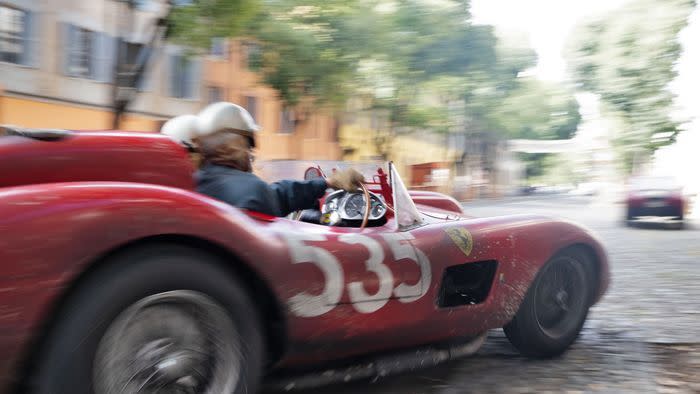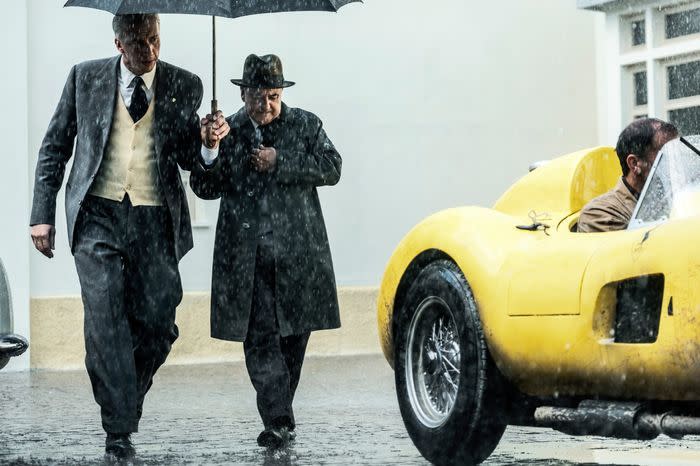‘Ferrari’ the Movie Is as Real as Hollywood Can Be

Ferrari the movie is out Christmas Day. It's good. Go See it.
Director Michael Mann packs as much realism into the story as any Hollywood racing movie is ever going to get. That might not be enough for you, but don't let your knowledge interfere with what is a lively telling of an epic story.
You'll see Patrick Dempsey and Derek Hill, too!
If conflict is the essence of drama, Enzo Ferrari led a dramatic life.
Director Michael Mann and screenwriter Troy Kennedy Martin—both working with the late, great Brock Yates’ book—finally got that life hammered and wedged into a two-hour movie.
Did they do it right? Yes, for the most part, and you should go see it. If only for the cars, which are all accurately portrayed and professionally driven by the likes of racer/actor Patrick Dempsey, who plays Piero Taruffi, and by Derek Hill, son of Phil, who plays Jean Behra.

There are bits and pieces of Enzo’s real life throughout, rearranged like chess pieces in a new order to make that drama, but ultimately they make it well.
The main dramatic conflict has to do with Enzo’s women. He had trouble with them. This much we can gather already. But he also had troubles with: Maserati, with his critics, with the Catholic church, the press, mid-engine powertrains, disc brakes, his mistress(es), and with people yelling race strategy suggestions as he walks down the street on the way to work.
But in spite of all that, or maybe because of it, Ferrari the man made fantastic cars and used them to win the world’s greatest races. In so doing he constructed a heralded brand that would last long after his death in 1988 at age 90 and grow into the multi-billion-dollar empire that it is today, where—still—only a small handful of the world’s richest people can own one of his cars but everyone else can own a licensed and trademarked Ferrari hat.
Picking which parts of this large and legendary life to put on screen could not have been easy. Rather than try and get it all into two short hours, director and producer Mann decided to focus on just a couple of days. Specifically, the days before and after the 1957 Mille Miglia.
Kennedy and Mann took a few pages from the middle of Yates’ Ferrari biography that covered that race and from that, much of this cinema flows.
The movie takes the real Mille Miglia and reconstructs it somewhat accurately, depending on how much you know about that 1000-mile flat-out thrash around Italy, from Brescia to Rome and back again through public streets with no speed limits, no barricades and no crowd control.
It places that nearly chaotic race into a swirl of Ferrari intrigue that is also somewhat compressed and sometimes presented in a completely different order than it happened in real life but still manages to make sense as a story.
The pretense the movie presents is that Ferrari is going to go bankrupt unless he can win the Mille and sell more cars. Win on Sunday sell on Monday. That’s not really accurate because, by all historical accounts, Ferrari the company was doing fairly well in 1957, having just won the world championship with Juan Manuel Fangio the year before and selling about as many street cars as it could produce.

 Yahoo Autos
Yahoo Autos 